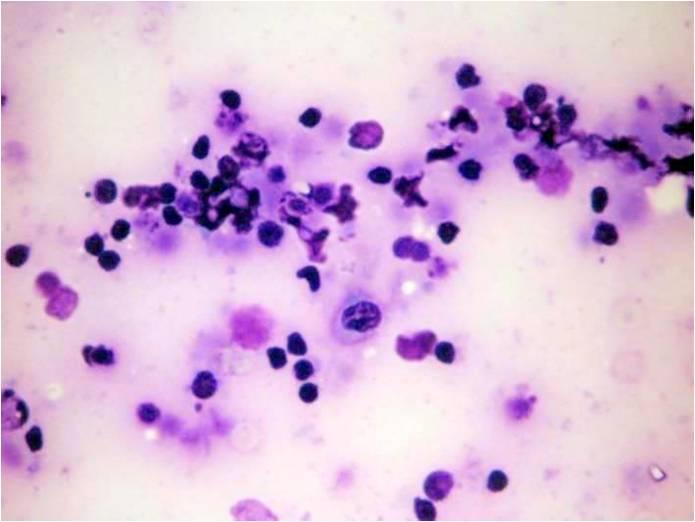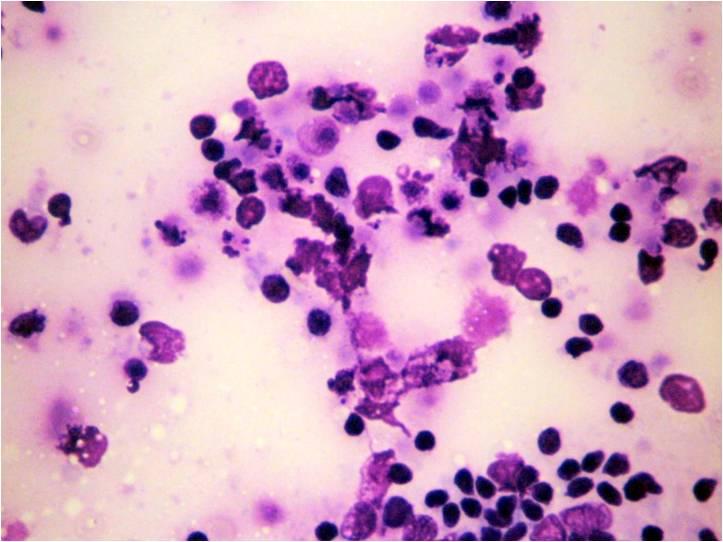This content is also available in:
Español
Português
Čeština
Magyar
Polski
The smear looks like the one from a lymph node: small lymphocytes, follicular lymphocytic cells, epithelioid cells, plasma cells dominate. Salivary gland originated epithelial cells are also present, embedded in the above background. The lesion is often cystic; in this case the aspirate is fluid. Acinic cells of the surrounding area and proliferative ductal cells are present. The epithelial cells may show osmotic changes: ill-defined cytoplasm, larger nucleus which is pale stained. In case of follicular lymphoid proliferation the differentiation from malignant lymphoma may be difficult. The lesion may be connected or part of the Sjögren Syndrome.









